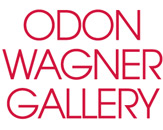Jean Baptiste Camille Corot
French
Corot was the leading painter of the Barbizon school of France in the mid- nineteenth century. He is a pivotal figure in landscape painting: His work simultaneously references the Neo-Classical tradition and anticipates the plein-air innovations of Impressionism. Of him Claude Monet exclaimed “There is only one master here–Corot. We are nothing compared to him, nothing.” His contributions to figure painting are hardly less important; Degas preferred his figures to his landscapes, and the classical figures of Picasso pay overt homage to Corot’s influence.
Historians somewhat arbitrarily divided his work into periods, but the point of division is never certain, as he often completed a picture years after he began it. In his early period he painted traditionally and “tight” — with minute exactness, clear outlines, and with absolute definition of objects throughout. After his 50th year his methods changed to breadth of tone and an approach to poetic power, and about 20 years later, from about 1865 onwards, his manner of painting became full of mystery and poetry. In part, this evolution in expression can be seen as marking the transition from the plein-air paintings of his youth, shot through with warm natural light, to the studio- created landscapes of his late maturity, enveloped in uniform tones of silver. In his final 10 years he became the “Père (Father) Corot” of Parisian artistic circles, where he was regarded with personal affection, and acknowledged as one of the five or six greatest landscape painters the world has seen, along with Hobbema, Claude Lorrain, Turner and Constable.
Odon Wagner Gallery, Toronto, Canada




